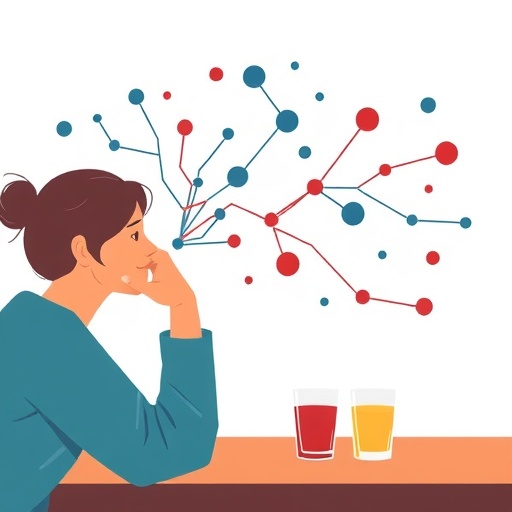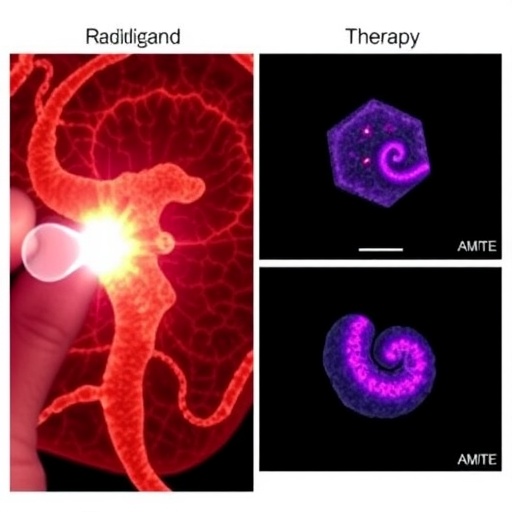
Credit: UMass Amherst
AMHERST, Mass. – In a new study by sleep researchers at the University of Massachusetts Amherst, neuroscientists led by Rebecca Spencer report for the first time evidence that naps and overnight sleep may work together to benefit memory in early childhood. Details appear today online in Scientific Reports.
Spencer, with her former doctoral student Laura Kurdziel in the department of psychological and brain sciences, who is now at Merrimack College, North Andover, Mass., and former undergraduate Jessica Kent, report that for children in this study, "Individually, the nap and overnight sleep bouts were not sufficient to induce changes in memory. A significant benefit of napping was observed only when changes across the entire 24-hour period were considered. This supports an interplay between the nap and subsequent overnight sleep in the consolidation of memories in young children."
The researchers say another highlight of their work is finding that naps do contribute to emotion processing in preschool children, which is consistent with parents' and early childhood teachers' observations, though this benefit in emotional memory is delayed, say Spencer and colleagues. This delay may reflect "short-term destabilization of an enriched memory," they add. That is, "there may be measurable benefits in behavior, even if not in memories themselves."
"A common observation of parents and preschool teachers is that children seem either grumpy or giddy when they skip their nap," says Spencer. "Our results are consistent with these observations of caregivers. Naps do contribute to emotion processing at this young age."
As she and colleagues explain, earlier research in adults has shown that emotion processing and emotional memory are enhanced with sleep, and there are suggestions that naps may support emotional regulation and emotional memory for toddlers, as well. But the prevailing "REM sleep hypothesis of emotional processing" says that REM sleep is required for this benefit, and naps lack this sleep stage. Instead, 42 percent of naps in toddlers consist of slow-wave sleep.
Thus the researchers set out to explore whether naps can contribute to memory consolidation for memories with emotional valence – either good or bad emotional content – in early childhood. To do this, they presented children ages approximately three to five years (34-64 months) with faces paired with mean or nice word descriptions, but they saw no significant main effects of emotional valence on recognition memory. Change in memory accuracy also did not differ when tested after a nap compared to the change in memory accuracy after an interval awake, they report.
However, when memory was tested again following overnight sleep, the change in memory accuracy was greater if the child had napped the previous day. Further, Spencer and colleagues report, greater nap slow wave activity was associated with greater memory decay during the nap. Yet nap slow wave activity also predicted greater overnight improvement in memory. Together, "these results suggest that sleep bouts can interact to benefit memory in early childhood," they conclude.
Study results were based on the performance of 49 children who were shown emotionally neutral photos of men's and women's faces paired with "mean" or "nice" statements, such as "Lena is always nice. Today she helped us pour milk into our cups at lunch time." Recognition of the familiar face versus an unfamiliar one was tested at three points: immediately after learning, after a delay either with a nap or awake, and again the next day. Children who did not nap were kept awake with quiet play items before the delayed test.
Around their normal bed time, parents brought the child to the sleep laboratory where they were fitted with an electroencephalography cap with electrodes for recording sleep stages during the night. Children awoke naturally from this and went about their normal morning routines before again being tested after 24 hours.
Overall, the authors report, "results of this study are consistent with those in procedural memory consolidation in preschool-aged children." As in observations by others, "both a nap and subsequent overnight sleep was necessary to observe performance benefits."
"This study demonstrates that napping is beneficial to memory processing," they point out. "Given the importance of socio-emotional learning in preschool naps averaging 70 minutes may support the curricular goals of early childhood education. As such, napping remains an important part of the daily preschool schedule and sufficient time for sleep should be protected."
###
This work was supported by grants from the National Institutes of Health and an Honors Research Grant from UMass Amherst's Commonwealth Honors College to Jessica Kent.
Media Contact
Janet Lathrop
[email protected]
413-545-2989
@umassscience
http://www.umass.edu
Related Journal Article
http://dx.doi.org/10.1038/s41598-018-30980-y





